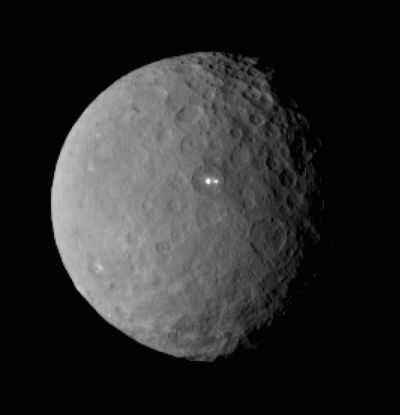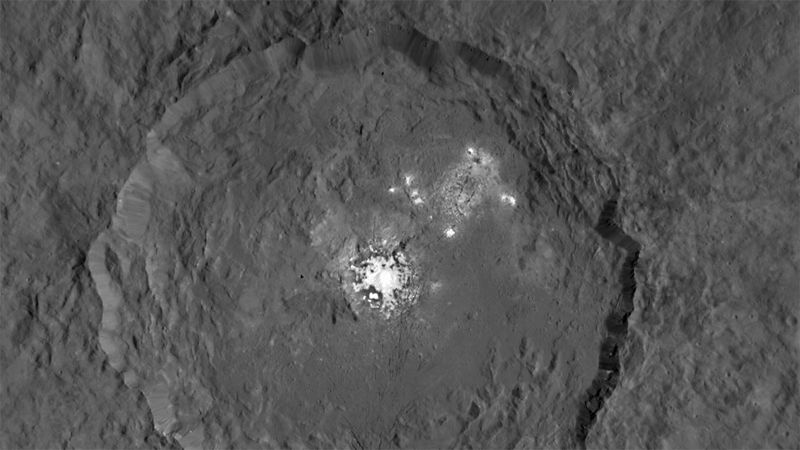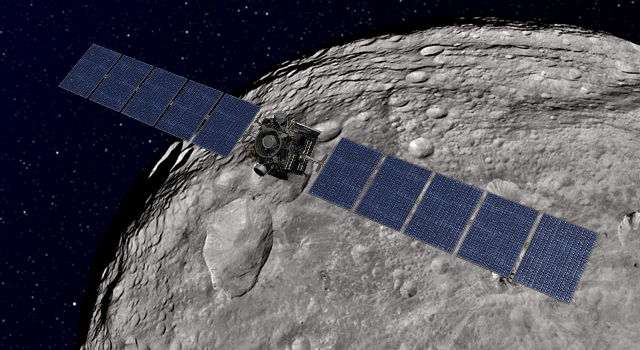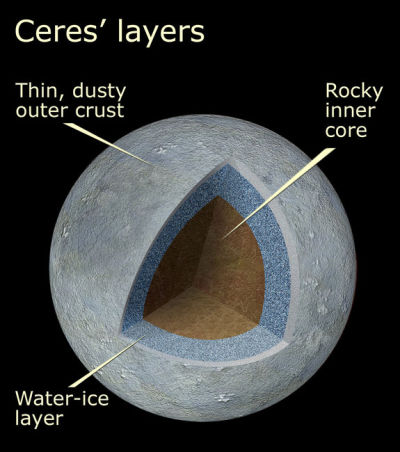The most detailed images yet of strange “white spots” on the dwarf planet Ceres beamed down from NASA’s Dawn spacecraft recently, bringing us closer to solving the puzzling mystery that emerged upon Dawn’s arrival there last March.
Ceres is the largest object in the Main Asteroid Belt that rings the sun between the orbits of Mars and Jupiter. Discovered by chance in 1801, Ceres was the first asteroid ever detected, and it’s still the largest object in the Belt.
As the Dawn mission continues to collect and transmit ever more detailed information about Ceres, we expect to learn something about the early formation of the solar system.

Ceres was classified as a dwarf planet in 2006, along with Pluto and three other solar system objects. But it wasn’t until Dawn’s arrival that we knew what Ceres looked like. And in keeping with what has become the rule, not the exception, in solar system exploration, Ceres had some surprises for us in the form of big, gleaming white spots.
When Dawn first drew close enough to Ceres to capture these brilliant but indistinct blurs on camera, scientists weren’t sure they meant anything actually existed; maybe they were simply an effect of exaggerated contrast in the low-resolution images.


